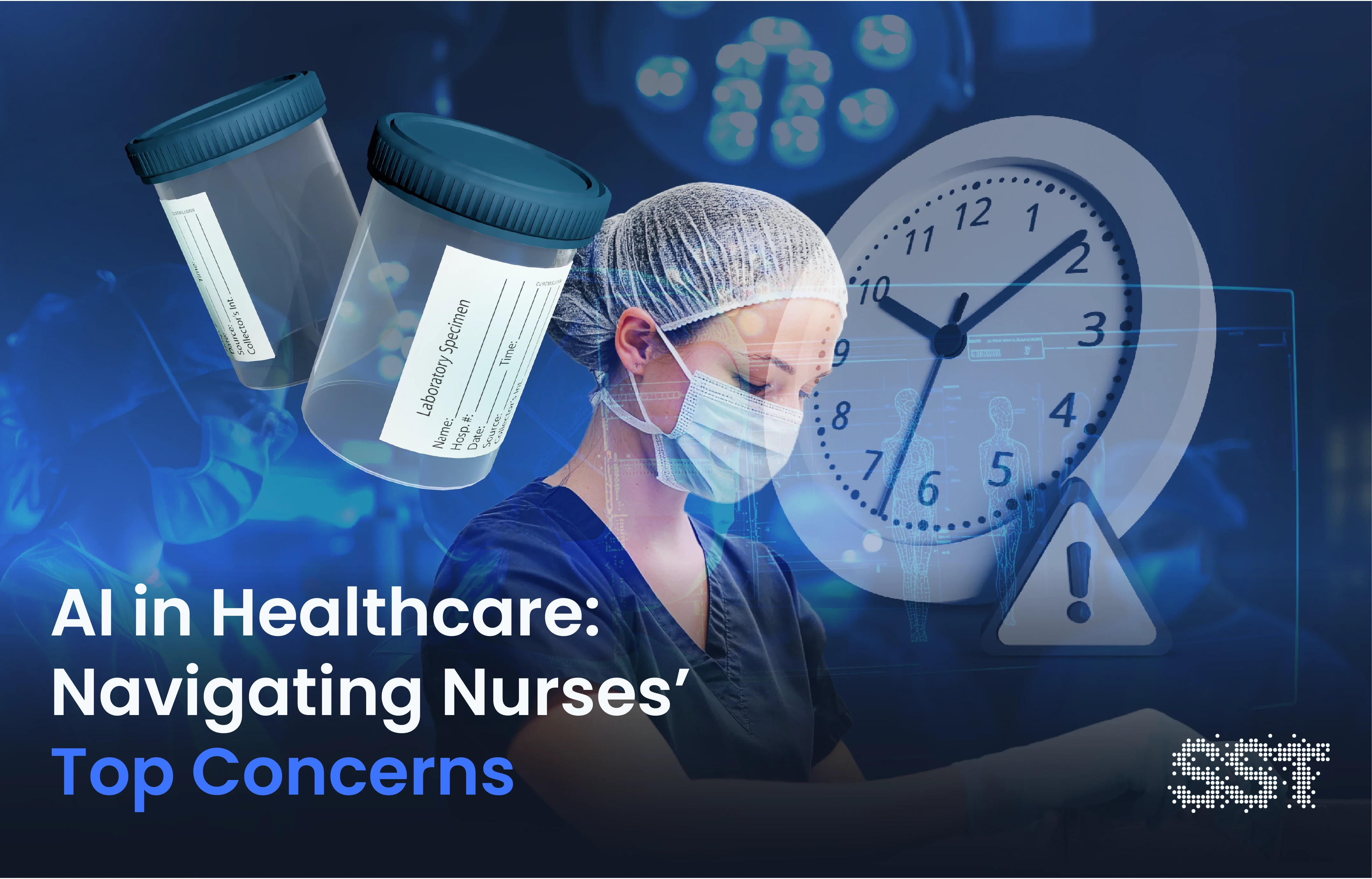ARTIFICIAL INTELLIGENCE
AI in Surgery: Insights from 4 Health Systems
The healthcare industry is witnessing the transformative impact of AI in surgery. Learn how 4 OR Black Box customers are using the technology.
Oct 2, 2024
Surgical Safety Technologies
The healthcare industry is witnessing the transformative impact of artificial intelligence (AI) in surgery. Becker's Healthcare recently sat down with four OR Black Box® customers:¹
Celia M. Divino, MD FACS, Chief, Division of General Surgery at Mount Sinai
Dominique Watt, RN, MBA, MSN, CNL, LSSBB, Executive Director of Clinical Effectiveness and Education, Interventional Platform at Stanford Medicine
Douglas S. Smink, MD, MPH, Chief of Surgery at Brigham and Women's Faulkner Hospital, Professor of Surgery at Harvard Medical School
Jennifer Hauck, MD, Assistant Professor of Anesthesiology at Duke Health
The discussion focused on how AI is enhancing patient safety, improving operational efficiency, and driving quality improvement in the operating room. Their experiences offer valuable insights for other healthcare institutions looking to leverage AI in their own surgical programs.
In this article, we will discuss:
How the OR Black Box is transforming surgical safety at leading institutions
The key applications and benefits of using AI technology in the operating room
Where these leading institutions are focusing next to improve safety, quality, and efficiency
The Power of the OR Black Box
At the heart of these institutions' AI initiatives is the OR Black Box®. The platform harnesses the power of data integration, video capture, and AI to improve patient safety, quality improvement, operational efficiency, and skills mastery in the operating room. The goal for many institutions leveraging the Black Box Platform™ is to detect anomalies, analyze events, and ultimately improve patient outcomes.
Within the webinar, the panelists shared the top ways they are currently using the technology and their plans for extending the value of the OR Black Box.
Key Applications of AI in Surgery
1. Enhancing Team Dynamics and Performance
A key focus across all four institutions has been leveraging the OR Black Box to elevate team dynamics and performance in the operating room.
One of the most powerful applications of AI technology has been to use the analytical insights to learn from exemplary and suboptimal team performances. Several institutions have incorporated the AI-derived, de-identified data in multidisciplinary reviews and grand rounds to collectively analyze cases and extract actionable insights. This collaborative approach fosters a culture of continuous improvement and helps break down traditional silos between different OR roles.
Dr. Divino emphasized, "The OR Black Box has revolutionized how we approach team training. It's not about pointing fingers, but about collective growth and enhancing patient safety."
Importantly, all institutions stress that this technology is not used for individual performance evaluations. Instead, the focus remains squarely on improving overall team functioning and patient safety. This approach creates a psychologically safe environment² where staff feel comfortable engaging openly with the improvement process.
"We've seen a remarkable shift in how our teams interact and communicate since implementing the OR Black Box," explained Dominique Watt. "It's opened up conversations we simply weren't having before, all in service of better patient care."
2. Improving Surgical Safety Checklist Performance
All four health systems have used the OR Black Box Surgical Safety Checklist Module to improve compliance with and effectiveness of the surgical safety checklist, particularly focusing on debriefs.
Brigham and Women's Faulkner Hospital is using the technology to gain insight into actual checklist performance rather than relying on manual audits. They can track numeric metrics and analyze team engagement during different aspects of timeouts and debriefs.
Dr. Smink explained, “We’ve used surgery checklists for over a decade, but that doesn't mean we always do it well. And we know that's true at all our institutions. This gives us a window into actual performance rather than performance on the checklist that you may get through an audit where somebody comes into the operating room with a clipboard. The ability to understand our compliance with the checklist, the engagement of the team, and the discussion that takes place about all the different aspects of the checklist was really important to us.”
At Stanford, the OR Black Box revealed a significant discrepancy between their traditional audit results and actual performance for post-procedure debriefs. This discovery led to a focused campaign to improve debrief compliance, resulting in sustained improvement of compliance over time.
Mount Sinai is also working on improving their debrief process, adapting it to their institutional priorities while maintaining consistency with World Health Organization (WHO) standards.³
The technology is helping these institutions identify specific areas for improvement within the checklist process, tailor educational interventions, and track progress over time, ultimately aiming to enhance patient safety, improve patient outcomes,⁴ and support team communication in the operating room.
3. Optimizing Operational Efficiency and Room Turnover
Mount Sinai and Duke are leveraging the OR Black Box Room State™ Module to improve OR turnover times and optimize scheduling.⁵
Dr. Divino stated, “With accurate data, we can actually solve our issues with block scheduling as well as staffing in the operating room; by increasing turnover, we can utilize the staff more efficiently and maybe reduce overtime costs.”
Duke has used the technology to analyze how teams are using their time during turnovers to identify where parallel work can be completed to expedite the process and improve throughput.
4. Supporting Education and Quality Improvement Initiatives
At several institutions, the OR Black Box has been positioned to set the stage for a culture change in how quality and safety is perceived and how teams approach training.
Mount Sinai introduced the technology to improve and optimize both efficiency and patient outcomes. Dr. Divino emphasized, “There's a culture of transparency and self-reflection based on very accurate data and not manual audits. That is important in driving our performance improvement projects and process measures. I think it's also very important as the Head of Education to start with young surgeons in training so that they enter their practice with different safety culture perspectives and practices.”
Duke has prioritized multidisciplinary use of the OR Black Box for quality improvement initiatives. Dr. Hauck noted, “We held our first multidisciplinary grand rounds that included surgery, anesthesia, nursing, techs, and surgical attendants. Together, we reviewed an intraoperative code after a patient was induced under anesthesia. Using the OR Black Box, we noticed how each discipline contributed to the resuscitation of the patient, we celebrated several highlights, and as a team, we identified two specific QI projects for our task forces to address.”
5. Collaborating Across Institutions
Each speaker emphasized the value in having access to cross-institution collaboration via the Surgical Safety Network. These top institutions are breaking down traditional silos to share knowledge, prevent implementation pitfalls, and drive innovation across institutions.
For Mount Sinai, the collaboration across institutions was helpful during the implementation process. Dr. Divino noted, “Collaboration between institutions is so valuable. The things I have learned and probably prevented a lot of mistakes in our implementation comes from talking to people who've had it at Duke, at Stanford, and at UT Southwestern.”
For Stanford, the team is seeing ongoing value in participating in Surgical Safety Network events and building new connections. Dominique Watt emphasized, “We participate in work groups in addition to evaluating the metrics of our own institutions. For the nursing work group, we meet quarterly, but we also meet in person now. I would not have these connections if it wasn't for the network. I really enjoy collaborating because it's a safe space and there's so many connections made.”
Next Steps for Leveraging the OR Black Box
As these institutions continue to refine their use of AI in surgery, several exciting directions are emerging:
Resident Education: Mount Sinai is incorporating the technology into their residency curriculum, leveraging the OR Black Box Explorer™ Module to enable residents to create their own personal video libraries to support ongoing learning and evaluation.
Culture of Safety: Stanford is leveraging the technology to enhance their culture of safety, focusing on giving all team members the tools and systems to speak up about concerns.
Interdisciplinary Grand Rounds: Brigham and Women's Faulkner Hospital plans to implement interdisciplinary grand rounds to review cases captured by the OR Black Box, focusing on positive performances to reinforce good practices.
Continuous Improvement: Duke is focusing on culture and quality improvement through increased engagement of frontline staff. They are educating staff about the OR Black Box, and how to flag cases and review them in the OR Black Box Case Discovery™ Module.
The integration of AI technologies like the OR Black Box into surgical programs represents a significant step forward in enhancing patient safety, improving team performance, and driving continuous quality improvement. While challenges exist, the experiences of these four leading health systems demonstrate that with careful implementation, clear policies, and a focus on improvement rather than punishment, AI can indeed lead to stronger surgical programs.
As Dr. Smink aptly put it, “If we really want to take surgical care to the next level, we need to embrace the technology that exists. We need to open up the operating room, the place that's been generally very secretive for decades, and use video and audio analysis to try to improve how we deliver care." This learning-focused approach, powered by AI, promises to usher in a new era of safer, more efficient, and higher quality surgical care.
Watch the on-demand webinar¹ to hear more from Dr. Divino, Dr. Hauck, Dr. Smink, and Dominique Watt. Interested in bringing this technology to your own institution? Contact us to learn more.
Recommended Reading
Surgical Safety Technologies. (Producer). (2024). AI for Stronger Surgical Programs: Tips from 4 Health Systems [Video]. https://www.surgicalsafety.com/events-webinars/ai-for-stronger-surgical-programs-tips-from-4-health-systems.
Psychological safety: the art of encouraging teams to be open. (2023, February 11). Financial Times. https://www.ft.com/content/5d544a25-d7dc-41ad-8b42-fe92406d25d7.
Surgical Safety Technologies (2024, June 17). WHO Surgical Safety Checklist: Research-Backed Efficacy, Real-World Neglect. https://www.surgicalsafety.com/blog/who-surgical-safety-checklist.
Abbas, A.I.A., Meier, J., Daniel, W., et., al. (2024). Impact of team performance on the surgical safety checklist on patient outcomes: an operating room black box analysis. Surg Endosc;38; 5613–5622 . https://www.surgicalsafety.com/clinical-research/team-performance-surgical-safety-checklist-patient-outcomes.
Surgical Safety Technologies (2024, November 19). Optimizing the Surgical Workflow with AI-Powered Insights. https://www.surgicalsafety.com/blog/optimizing-the-surgical-workflow-with-artificial-intelligence.





